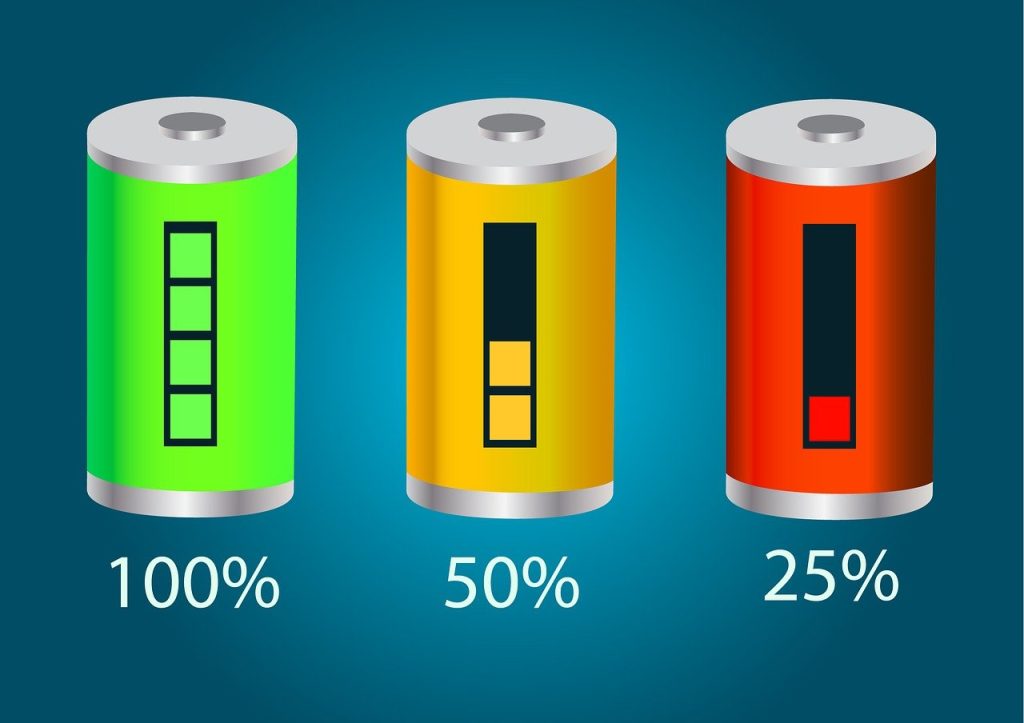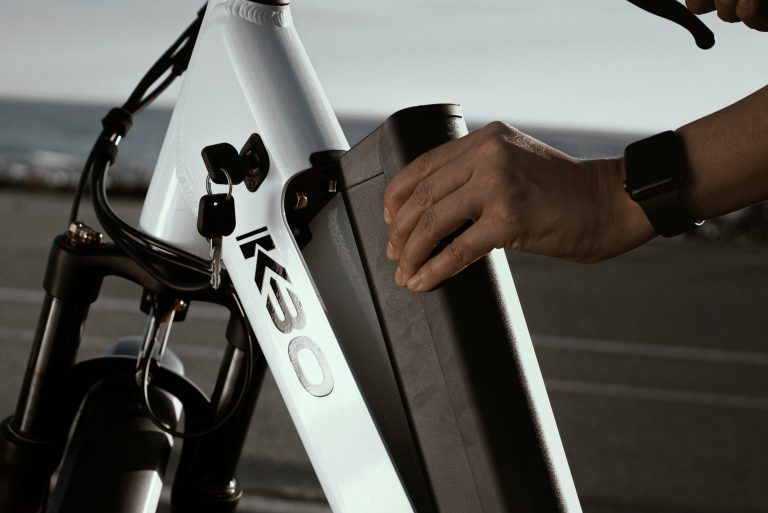Which Ebike Battery Lasts Longest?
If you’re in the market for an electric bike, you’ve probably come across the question of which ebike battery lasts the longest. With the rising popularity of ebikes, it’s no wonder that riders are seeking a durable and long-lasting battery. In this article, we’ll explore the different factors that can affect battery longevity and provide some insights into which batteries may offer the longest lifespan. So, if you’re curious about maximizing the mileage of your electric bike, keep reading to discover the secret behind the longest-lasting ebike batteries.

Capacity
What is battery capacity?
Battery capacity refers to the amount of electrical energy that a battery can store. It is typically measured in Ampere-hours (Ah) or Watt-hours (Wh), which indicate the total amount of energy a battery can deliver over a specific period of time. The higher the battery capacity, the longer the battery can last before needing to be recharged.
How does battery capacity affect the longevity?
Battery capacity plays a crucial role in determining the longevity of an ebike battery. A higher capacity battery generally means that the battery can provide power for a longer distance or duration before it needs to be recharged. This not only enhances the overall riding experience but also increases the lifespan of the battery as it undergoes fewer charge cycles.
Factors that affect battery capacity
Several factors can influence the capacity of an ebike battery. One of the primary factors is the size and weight of the battery. Larger batteries generally have a higher capacity and can store more energy. Additionally, the specific chemistry used in the battery can impact the capacity. Different types of battery chemistries offer varying energy densities, resulting in differences in capacity. Furthermore, the age and condition of the battery can also affect its capacity over time.
Types of battery capacities
There are various types of battery capacities available for ebikes. The most common ones include:
-
Standard Capacity: These batteries typically have capacities ranging from 250Wh to 500Wh. They are suitable for casual commuters or riders who do not require extensive range.
-
High Capacity: High capacity batteries usually range from 500Wh to 750Wh. They are ideal for riders who frequently embark on longer trips or have a higher power demand.
-
Ultra High Capacity: These batteries offer capacities above 750Wh and cater to those who require maximum range and power, such as endurance riders or individuals who frequently ride in hilly terrains.
Choosing the right battery capacity depends on personal riding needs and preferences. Factors like commuting distance, terrain, and frequency of rides should be considered when selecting the most suitable battery capacity for an ebike.
Battery Chemistry
Different types of battery chemistries
Ebikes utilize various battery chemistries, each offering unique advantages and disadvantages. The most common battery chemistries found in ebikes include:
-
Lithium-ion (Li-ion): Li-ion batteries are widely used due to their high energy density, lightweight design, and long lifespan. They offer a good balance between capacity, weight, and durability.
-
Lithium-polymer (Li-Po): Li-Po batteries are similar to Li-ion batteries but are often found in slim and lightweight configurations. They provide excellent energy density but can be more expensive.
-
Nickel-cadmium (NiCd): NiCd batteries were once popular but are now less common due to environmental concerns. They offer good cycle life and perform well in extreme temperatures, but their energy density is lower compared to lithium-based batteries.
-
Nickel-metal hydride (NiMH): NiMH batteries are a more environmentally friendly alternative to NiCd batteries. They provide a good balance between energy density and cost, but their performance is not as strong as lithium-based batteries.
Which battery chemistry provides the longest lifespan?
Among the different battery chemistries, lithium-ion (Li-ion) batteries generally offer the longest lifespan. Li-ion batteries have excellent cycle life capabilities, which refer to the number of charge and discharge cycles a battery can undergo before its capacity significantly diminishes. With proper care and maintenance, Li-ion batteries can endure hundreds, if not thousands, of charge cycles.
Comparisons between popular battery chemistries
Let’s compare the popular battery chemistries in terms of various aspects:
-
Energy Density: Li-ion and Li-Po batteries have higher energy densities compared to NiCd and NiMH batteries.
-
Weight: Li-ion and Li-Po batteries are lighter, making them more suitable for ebikes.
-
Cycle Life: Li-ion batteries have a longer cycle life compared to NiCd and NiMH batteries.
-
Cost: Li-ion and Li-Po batteries are generally more expensive compared to NiCd and NiMH batteries, but their higher performance justifies the investment.
Considering these factors, Li-ion batteries are commonly preferred for their superior overall performance, longer lifespan, and lightweight design.
Charge Cycles
What are charge cycles?
A charge cycle refers to the complete process of charging and discharging a battery. Each time a battery is charged to its maximum capacity and then discharged, it completes one charge cycle. The lifespan of an ebike battery is determined by the number of charge cycles it can undergo before its capacity significantly decreases.
How do charge cycles impact battery longevity?
Charge cycles have a direct impact on the longevity of an ebike battery. The more charge cycles a battery undergoes, the more its capacity diminishes over time. Each charge cycle causes a slight decrease in the battery’s overall capacity, reducing its range and performance. Therefore, minimizing the number of charge cycles a battery undergoes is vital for maximizing its lifespan.
How to maximize the number of charge cycles
To maximize the number of charge cycles and extend the lifespan of an ebike battery, consider the following tips:
-
Avoid frequent partial charging: Ideally, try to charge the battery fully, rather than partially, whenever possible. Frequent partial charging can contribute to more charge cycles and reduce battery lifespan.
-
Don’t overcharge: Avoid leaving the battery plugged in for extended periods once it reaches full charge. Overcharging can cause stress on the battery and impact its longevity.
-
Maintain optimal charge levels: Avoid letting the battery discharge completely. Try to keep the battery charge level between 20% and 80% for optimal battery health.
-
Store at proper charge levels: If the battery will be inactive for an extended period, store it at around 50% charge. Storing a battery at full charge or empty can degrade its capacity over time.
By following these practices, you can help prolong the lifespan of your ebike battery and minimize the need for frequent replacements.
Battery Management System
What is a battery management system (BMS)?
A battery management system (BMS) is an electronic system that manages and protects the battery pack. It monitors various parameters such as voltage, temperature, and current to ensure the battery operates within safe limits. Additionally, a BMS also helps balance the charge levels of individual battery cells, which is crucial for maintaining optimal battery performance and longevity.
The role of BMS in extending battery lifespan
A BMS plays a critical role in extending the lifespan of an ebike battery. It helps prevent overcharging, over-discharging, and overheating, which can all lead to accelerated battery degradation. By actively monitoring and regulating the battery’s performance, a BMS mitigates the risk of damage and ensures the battery operates within safe and efficient parameters. This helps maximize the battery’s lifespan and overall performance.
Features of a good BMS
A good BMS should possess the following features to effectively extend battery lifespan:
-
Overcharge and over-discharge protection: The BMS should prevent the battery from being charged beyond its safe limits or discharged too low, which can cause irreversible damage.
-
Cell balancing: The BMS should actively balance the charge levels of individual battery cells to prevent any cell from being overcharged or undercharged.
-
Temperature monitoring: A BMS should monitor the battery temperature and initiate protective measures, such as reducing the charge rate, when the temperature exceeds safe limits.
-
Communication capabilities: A BMS with communication capabilities allows the rider to monitor battery performance, health, and diagnostics. It enables timely intervention and ensures optimal battery performance.
A robust BMS not only safeguards the battery but also contributes significantly to extending its lifespan, providing peace of mind for ebike riders.

Operating Temperature
The impact of temperature on battery performance
Temperature has a noticeable impact on the performance and lifespan of ebike batteries. Extreme temperatures, both hot and cold, can affect the battery’s capacity, overall performance, and lifespan. High temperatures can accelerate the aging process and result in faster capacity loss, while freezing temperatures can reduce the battery’s ability to deliver power efficiently.
Ideal temperature range for maximum battery lifespan
The ideal temperature range for maximizing the lifespan of an ebike battery is typically between 20°C and 25°C (68°F and 77°F). Operating the battery within this temperature range minimizes the stresses on the battery and helps maintain its performance and capacity over time. It is advisable to avoid exposing the battery to temperatures below freezing or above 60°C (140°F) to prevent any adverse effects on the battery’s longevity.
Measures to protect the battery from extreme temperatures
To protect the battery from extreme temperatures and extend its lifespan, consider the following measures:
-
Avoid leaving the battery in direct sunlight or in extremely hot/cold environments. Store the battery in a cool and dry place when not in use.
-
During cold weather, avoid using the battery immediately after exposure to low temperatures. Allow the battery to warm up gradually to avoid any potential damage.
-
If riding in extreme temperatures is unavoidable, consider using insulation or temperature regulation accessories specifically designed for ebike batteries.
By taking precautions and ensuring proper temperature management, you can help maintain the health and longevity of your ebike battery.
Charging Patterns and Habits
How charging patterns affect battery lifespan
Charging patterns and habits have a significant impact on the overall lifespan of an ebike battery. Certain charging practices can accelerate battery aging and reduce its capacity over time. Understanding and following the best charging practices can help maximize the battery’s lifespan and performance.
Best practices for charging and discharging
To optimize the lifespan of an ebike battery, consider the following best practices for charging and discharging:
-
Charge before the battery completely drains: Avoid fully discharging the battery before recharging. Instead, aim to recharge the battery when it reaches around 20% to 30% capacity. This helps prevent over-discharging, which can negatively impact battery life.
-
Use the manufacturer-recommended charger: Always use the charger provided by the manufacturer or a compatible charger. Using inappropriate chargers can lead to overcharging or undercharging, both of which can harm the battery.
-
Avoid rapid charging: While rapid charging may be convenient, it can generate additional heat and stress, which can reduce the battery’s lifespan. Opt for slower charging methods whenever possible.
-
Regularly top off the battery: If you have the opportunity, top off the battery during breaks or when the charge level is relatively low. This can help minimize the depth of discharge and reduce the strain on the battery.
Avoiding common charging mistakes
To ensure the longevity of your ebike battery, it is important to avoid common charging mistakes, such as:
-
Leaving the battery on charge for extended periods: Avoid leaving the battery plugged in for hours or overnight. Overcharging can lead to accelerated capacity loss and premature aging.
-
Charging the battery immediately after a ride: Allow the battery to cool down before charging it. Charging a hot battery can negatively impact its lifespan.
-
Neglecting regular charging checks: Occasionally check the charging process to ensure everything is working as expected. If you notice any unusual behavior, consult the manufacturer or a professional to address the issue promptly.
By adopting proper charging habits and avoiding common mistakes, you can maximize the lifespan of your ebike battery and enjoy consistent performance during your rides.

Manufacturer’s Quality and Reputation
The importance of choosing a reputable manufacturer
Choosing a reputable manufacturer is crucial when purchasing an ebike battery. A reputable manufacturer ensures that the battery is designed, manufactured, and tested to meet stringent quality standards. High-quality batteries are more likely to deliver superior performance, reliability, and longevity compared to batteries from lesser-known or unreliable manufacturers.
When selecting a battery, consider factors such as the manufacturer’s track record, customer reviews, certifications, and adherence to industry standards. Researching the manufacturer’s reputation can provide valuable insights into the overall quality and reliability of their batteries.
Warranty and customer support considerations
Another essential aspect when evaluating manufacturers is the warranty and customer support they provide. A reputable manufacturer usually offers a comprehensive warranty covering manufacturing defects and provides reliable customer support for any queries or issues that may arise.
Carefully review the warranty terms, including coverage duration, conditions, and any limitations or exclusions. Understanding the warranty and having access to reliable customer support is crucial for a hassle-free ownership experience and peace of mind.
Researching battery performance and reliability
Before making a purchase, invest time in researching the performance and reliability of the battery models you are considering. Look for independent reviews, user experiences, and performance tests conducted by trusted sources or reputable publications. Consumer forums and online communities dedicated to ebikes can also provide valuable insights and firsthand experiences from actual users.
By conducting thorough research and choosing a battery from a reputable manufacturer, you can significantly increase the chances of acquiring a high-quality and long-lasting battery for your ebike.
User Maintenance and Care
Regular maintenance for long-lasting batteries
Regular maintenance is essential for ensuring the longevity of an ebike battery. By following simple maintenance practices, you can enhance the battery’s lifespan and maximize its performance throughout its lifespan.
Tips for proper battery care
Consider the following tips for proper battery care:
-
Keep the battery clean: Regularly wipe down the battery with a soft, dry cloth to remove any dirt or debris. Avoid using water or harsh chemicals, as they can damage the battery or its casing.
-
Avoid extreme temperatures: As mentioned earlier, extreme temperatures can significantly impact battery lifespan. Therefore, store the battery in a cool and dry place when not in use.
-
Avoid impacts and vibrations: Protect the battery from impacts or vibrations that can damage internal components. Ensure the battery is securely mounted and consider using shock-absorbing accessories, if necessary.
-
Check for loose connections: Periodically inspect the battery’s connections to ensure they are tight and secure. Loose connections can lead to voltage drops and reduced performance.
Storing batteries during periods of inactivity
If you plan to store your ebike and battery during periods of inactivity, follow these guidelines:
-
Charge the battery to around 50% capacity before storage. Storing a fully charged or fully depleted battery can lead to degradation.
-
Store the battery in a cool and dry location that is away from direct sunlight and extreme temperatures.
-
Check the battery’s charge level every few weeks and recharge it if necessary to maintain optimal storage conditions.
By incorporating these maintenance practices and proper care, you can extend the lifespan of your ebike battery and enjoy reliable performance for years to come.
User Riding Style and Terrain
How riding style impacts battery lifespan
Riding style has a significant impact on the lifespan of an ebike battery. Aggressive riding, frequent acceleration, and sustained high-speed riding can strain the battery and diminish its capacity over time. On the other hand, a more conservative riding style with gradual acceleration and gentler use of assist modes can help preserve the battery’s lifespan.
Choosing the right assist level and power mode
To optimize battery lifespan, it is important to choose the appropriate assist level and power mode based on your riding conditions and requirements. Riding on steep terrain or against strong headwinds may necessitate using higher assist levels, which will consume more energy. However, in flatter terrain or situations where less power is required, using lower assist levels can help conserve battery energy and extend its lifespan.
Understanding your riding needs and adjusting the assist level and power mode accordingly will contribute to maximizing the battery’s longevity.
Considerations for hilly or rough terrains
If you frequently ride in hilly or rough terrains, there are specific considerations to keep in mind:
-
Battery capacity: Opt for a battery with a higher capacity to ensure sufficient energy for tackling hilly terrains. A larger capacity battery can offer more power and range, reducing the strain on the battery during uphill climbs.
-
Assist modes: Utilize higher assist levels when climbing hills, as these modes deliver more power to help overcome the elevated terrain. This reduces the strain on the battery and allows for a more efficient and comfortable ride.
-
Regenerative braking: Some ebikes offer regenerative braking, which converts the kinetic energy generated during braking into electrical energy that charges the battery. Utilizing regenerative braking on downhill sections can provide a slight boost to the battery’s charge, especially when riding in hilly terrains.
By understanding the demands of the terrain and using the appropriate assist levels and power modes, you can optimize battery usage and extend its lifespan, even in challenging riding conditions.
Battery Replacement and Upgrades
When to consider battery replacement
The need for battery replacement typically arises when the battery’s capacity significantly diminishes, affecting the ebike’s range and performance. While the exact timing for replacement varies depending on individual usage and battery construction, a significant reduction in capacity, usually below 80% of the original capacity, may prompt considering a battery replacement.
Other signs that may indicate the need for replacement include noticeable decline in range, reduced power output, or recurring issues that cannot be resolved through maintenance or troubleshooting.
Upgrading to a higher capacity battery
Upgrading to a higher capacity battery can be a viable option when seeking additional range or power. By opting for a battery with a larger capacity, you can extend your ebike’s range and potentially enjoy longer rides without needing to recharge. It is important to ensure compatibility with your ebike’s electrical system and consult with the manufacturer or a professional for guidance on the upgrade process.
Cost considerations for battery replacement
While battery replacement can be an investment, it is important to consider the long-term benefits and cost savings that a new battery can bring. A new battery with improved capacity and performance can enhance your overall riding experience and reduce the need for frequent recharging.
When evaluating battery replacement options, consider factors such as warranty coverage, performance guarantees, and customer support. Additionally, check if the manufacturer offers any trade-in or recycling programs for the old battery, ensuring responsible disposal and environmental sustainability.
While cost is a consideration, it is important to prioritize quality and longevity to ensure a reliable and enjoyable ebike experience.
Conclusion: Choosing the right ebike battery, maintaining it properly, and considering all the factors that affect battery longevity are essential for maximizing its lifespan. Battery capacity, chemistry, charge cycles, battery management systems, operating temperature, charging patterns, manufacturer reputation, user maintenance and care, riding style, and terrain all contribute to the overall lifespan of an ebike battery. By understanding these factors and following best practices, you can ensure a long-lasting and reliable power source for your ebike adventures. Remember to choose a reputable manufacturer, optimize charging practices, and take care of your battery with regular maintenance. With proper attention and care, your ebike battery can provide optimal performance and enjoyment for many miles to come. Happy riding!







